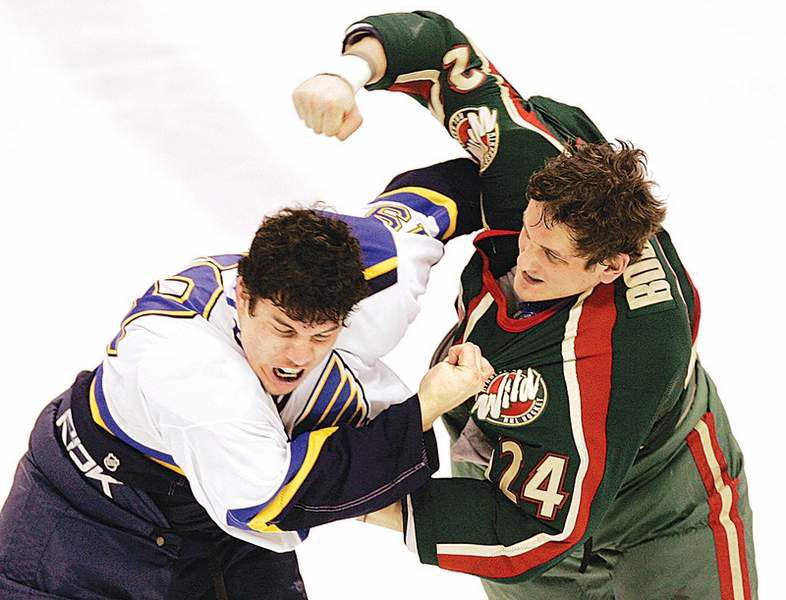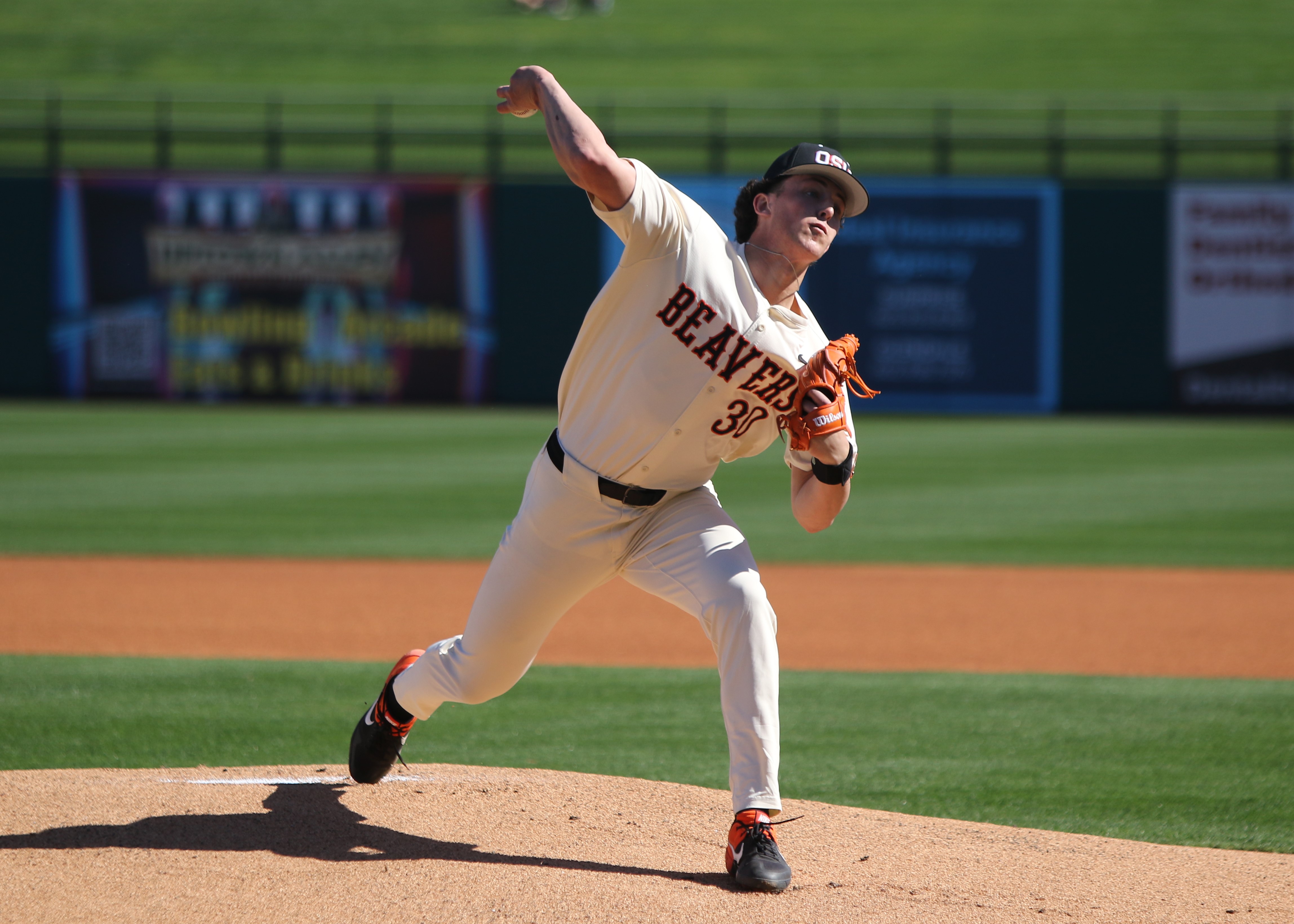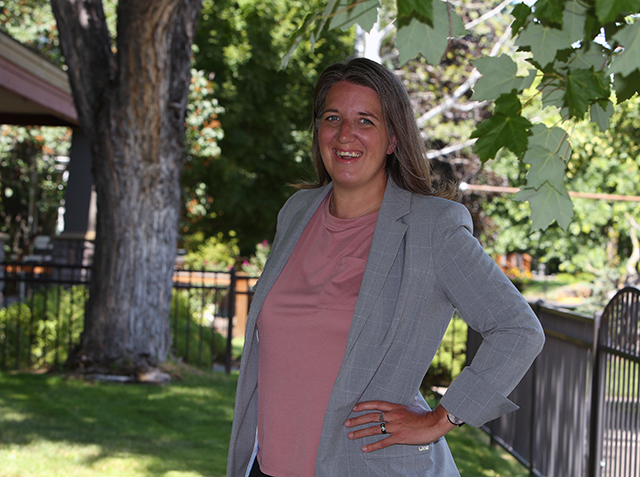Punched out: The life and death of an NHL enforcer
Published 4:00 am Monday, December 19, 2011

- Minnesota Wild’s Derek Boogaard, right, delivers a punch to St. Louis Blues’ D. J. King during a game in 2007.
Editor’s note: Over six months, The New York Times examined the life and death of the professional hockey player Derek Boogaard, who rose to fame as one of the sport’s most feared fighters before dying at age 28 on May 13. This article, the second in a three-part series, revisits Boogaard’s development into the most feared enforcer in the NHL and the early signs of his physical demise.
“I didn’t see it coming at all. I was in a bad position and he hit me hard, hardest I’ve ever been hit. I instantly knew it was broken. I didn’t lose consciousness, but I went straight on the ice. And I felt where it was, and my hand didn’t rub my face normally. It was a little chunky and sharp in spots and there was a hole there about the size of a fist.” — Todd Fedoruk, former NHL enforcer
Trending
The fist belonged to Derek Boogaard. Whenever he opened his right hand, the fingers were bent and the knuckles were fat and bloody with scar tissue, as if rescued a moment too late from a meat grinder. That hand was, until the end, what the family worried about most with Boogaard. How would he write when he got old?
When Boogaard closed his right hand, though, it was a weapon, the most feared in the NHL. The thought of Boogaard’s right fist kept rival enforcers awake at night. It made them alter their strategy and doubt their fighting acumen.
And, in the case of Todd Fedoruk, that fist shattered his face and dropped him to the ice, all while officials and teammates watched, an arena full of hockey fans cheered and Boogaard’s Minnesota Wild teammates banged their sticks against the boards in appreciation.
No single punch announced the arrival of a heavyweight enforcer the way it did on Oct. 27, 2006. Fedoruk, 6 feet 2 inches and 235 pounds, had built a career as a nuisance and willing combatant. Trying to avenge a hit that the 6-foot-8-inch Boogaard had laid on an Anaheim Ducks teammate, Fedoruk chased Boogaard down the ice. He baited him with tugs on his jersey.
Seven seconds after their gloves dropped, the damage was done. Surgeons inserted metal plates and a swath of mesh to rebuild the right side of Fedoruk’s face. His career was never the same.
Message sent. Players around the league took notice of the Boogeyman.
Trending
“I knew sooner or later he would get the better of me,” said Georges Laraque, long considered the toughest man in hockey. “And I just — I like my face, and I just didn’t want to have it broken.”
Boogaard was 24, in his second NHL season. He was already established as a fan favorite in Minnesota and a man to avoid everywhere else in the dangerous, colorful and sometimes unhinged world of hockey enforcers.
“I never fought mad. Because it’s a job, right? I never took it personally. Lot of times when guys fight, you just ask the other guy politely. Because the job is hard enough. Why make it harder by having to insult anyone? We know what the job is.” — Georges Laraque, former NHL enforcer
There has been fighting in hockey for about as long as there have been pucks. Early games, on frozen ponds and outdoor rinks, were often scrumlike affairs with little passing. Without strong rules, scores were settled with swinging sticks and flying fists.
The NHL, formed in 1917, considered a ban on fighting. It ultimately mandated that fighters be assessed a five-minute penalty. That interpretation of justice, now Rule 46.14, still stands. It has never been much of a deterrent.
The best way to protect top players from violent onslaughts, teams have long believed, is the threat of more violence, like having a missile in a silo. Teams employ on-ice bruisers, the equivalent of playground bodyguards. Hurt one of us, and we will send out someone bigger, tougher, to exact revenge.
“Having another player in the bench that is willing to come over and willing to punch you is a good deterrent for other violence on the ice — as crazy as that sounds,” said Matt Shaw, an assistant coach for the NHL’s San Jose Sharks.
Teams did not hesitate to promote the prospect of a ruckus. Fighting was not just necessary, they believed, but also part of hockey’s allure. Nearly half of NHL games, 600 or more in a typical season, pause for a two-man brawl.
“I went to a fight the other night and a hockey game broke out,” the comedian Rodney Dangerfield used to say. Everyone still gets the joke.
Fighting is not tolerated in most hockey leagues around the world. It is not part of college hockey in the United States and Canada, nor international tournaments like the Olympics.
But it is a mainstay of North American professional leagues, stretching from the NHL to small-town minor and junior leagues. Proponents believe the sport is so fast and so prone to contact that it needs players to police the shadowy areas between legal hits and dirty play.
With a mix of menace and muscle, enforcers settle grievances and slights between teams, be they real, imagined or concocted as an excuse for disorder. Sometimes fights are spontaneous combustions, a punch thrown to avenge a perceived cheap shot. Others are premeditated affairs, to settle simmering disputes — whether from last period or last season. Some are intended to reverse the momentum of a lopsided game. Some are a restless player’s way of proving himself to his team.
But there is generally order to the chaos, unwritten rules of engagement, commonly called “the code.”
It covers everything from how a fight originates (both players must agree, and they usually do because of a fraternal bond of responsibility) to how it ends (with a modest glide to the penalty box).
No sticks. Hands must be bare. Face-protecting visors are not worn by most enforcers to indicate that their face is open for business.
“Derek would take two or three punches to land one good one. He wasn’t a defensive fighter. I remember he said: ‘I hate guys that hide. When I fight, I’m going to throw, and I’m going to throw hard. I don’t have an off switch.’ Anytime a fight didn’t go his way — a draw or maybe he thought he lost — that would eat at him.” — John Scott, NHL enforcer
Boogaard had size and determination, but not much else, when the Wild chose him in the seventh round of the 2001 NHL draft. He trained with a Russian figure skater. He continued lessons to bolster his boxing. He was sent for seasoning in the minor leagues, where Wild officials told the coaches to mold Boogaard into an NHL enforcer.
His minor league coaches did not have such vivid imaginations.
“We didn’t give him a chance, and we were the guys trying to help him,” said Shaw, the current Sharks assistant who coached Boogaard in the minor leagues and the NHL. “Give him credit. This guy willed his way to the NHL.”
At his first camp after being drafted, Boogaard aimed his body at an opponent, who ducked at the last moment. Boogaard hit the glass and shattered it. His body tumbled out of the rink.
At 20, Boogaard was assigned to the Louisiana IceGators of the East Coast Hockey League. Within a year, he battered his way to the Houston Aeros of the American Hockey League, one rung below the NHL.
Hard work endeared him to coaches. In the summer heat of Houston, Boogaard tirelessly ran up hills near the practice rink. He stayed late after practice, awaiting further instruction. Alone, he skated, shot and practiced the basics, hoping coaches would trust him enough to put him in the game.
Most important, Boogaard won fights. The Aeros replayed bouts on the video board and called it “Boogeyman Cam.” They had a Boogaard bobblehead promotion, and the fists bobbled, too.
Boogaard skated well for a big man, but he turned like a locomotive. When he aimed his body at players and missed, the rattling boards echoed an intimidating message. One coach told the Aeros staff that Boogaard was their most valuable player, because his team was frightened by his mere presence.
“That’s when it hit me,” Shaw said. “I went: ‘Good God. This guy’s going to play.’ ”
Still raw, Boogaard went to the Wild’s training camp in 2005. He beat up an enforcer from Buffalo, then one from Chicago in preseason games. Jacques Lemaire, the Wild coach, saw the impact Boogaard had on other teams. He never played in the minors again.
In his first regular-season fight, on Oct. 16, 2005, against Anaheim, he pounded Kip Brennan before dropping him with a big right hand. Boogaard won again, then again. With each fallen opponent, the rookie’s popularity grew.
Such adoration is not unusual. The enforcer, sometimes mocked as a goon or euphemized as a tough guy, may be hockey’s favorite archetype. Enforcers are seen as working-class superheroes — understated types with an alter ego willing to do the sport’s most dangerous work to protect others. And they are underdogs, men who otherwise might have no business in the game.
Boogaard went nearly five years between NHL goals and scored three times in 277 games. He spent 1,411 minutes on the ice and 589 minutes in the penalty box.
But he was quick to do an interview or sign on for charity work. He was huge and imposing, yet he laughed easily and always kneeled to talk to children. His personality was an understated counterweight to his outsized reputation as a fighter. His No. 24 became a top-selling replica jersey.
“It was the fierceness of his brand and the gentleness of his character,” explained Tom Lynn, a former Wild executive.
“My back wakes me up. I get on the floor every morning. My left hand has been smashed and broken so many times I’m missing a knuckle. From the concussions, my memory — I have a lapse with my memory at times. It’s just little things, and important things. If you look at the fights I’ve had since I was 16, I’ve had about 300. These aren’t boxing gloves. These are fists. There has to be an impact.” — Brantt Myhres, former NHL enforcer
The worry was always about the hands. Like those of most enforcers, Derek Boogaard’s giant hands were mangled — especially the right one. But that was the most obvious cost of his work. The rest of the damage, physical and mental, he liked to hide.
Last winter, a friend said, a neurologist asked Boogaard to estimate how many times his mind went dark and he needed a moment to regain his bearings after being hit on the head, probable signs of a concussion. Four? Five? Boogaard laughed. Try hundreds, he said.
There is no incentive to display weakness. Most enforcers do not acknowledge concussions, at least until they retire. Teams, worried that opponents will focus on sore body parts, usually disguise concussions on injury reports as something else. In Boogaard’s case, it was often “shoulder” or “back,” two chronic ailments, even when his helmet did not fit because of the knots on his head.
“I hid my concussions,” said Ryan VandenBussche, 38, a former enforcer who estimates he had at least a dozen concussions, none of them diagnosed. “I masked them with other injuries. I’m not a huge guy, by no means, but I fought all the big guys. And I certainly didn’t want to be known as being concussion prone, especially early in my career, because general managers are pretty smart and your life span in the NHL wouldn’t be very long.”
Myhres said he had concussions diagnosed twice but estimated he had more than 10 in his career. Now 37, he feels his memory slipping.
Mat Sommerfeld toppled Boogaard the first time they fought in the Western Hockey League. He was only 6-2 and 200 pounds, but he was drafted by the Florida Panthers to be an enforcer.
Concussions ended Sommerfeld’s career. In his first rookie camp, his face was so swollen after a fight that he had to sleep sitting up for a few days. There were times he took the ice still woozy from a blow, only to be leveled again.
Now married with young children, working the family farm in Saskatchewan, Sommerfeld has had bouts of depression serious enough to warrant professional help.
“I don’t know if it’s worth it,” he said. “It wasn’t for me.”
Boogaard likely had dozens of concussions before his death in May. No one knows.
“Obviously, I’ve used painkillers, with injuries and stuff. Get your shoulder rebuilt, get your knee scoped. It’s hard to go out that next night and fight that world-class guy with broken knuckles. I’ve gotten into the drugs. Not going to lie. I’m sure people think, ‘Oh, he’s making $1.5 million, how bad can it be?’ But they’ve never been in his shoes.” — Mitch Fritz, former NHL enforcer
It was the middle of the 2007-08 season, and Boogaard knew that Fedoruk was in the midst of a decadelong battle with alcohol and drugs. Boogaard was taking prescribed pain medicine for his aching back.
“He’s like, ‘Man, these things work really good,’ ” Fedoruk recalled.
Boogaard and Fedoruk met as boys at camp for the Regina Pats in 1998. Almost a decade later, Fedoruk, three years older, was a teammate, mentor and confidant. And Boogaard wanted to know about painkillers.
“Him knowing my history, I think he knew he could trust me,” Fedoruk said. “He could open up to me and maybe try and find out some things about that. He was asking questions like, ‘You’re taking because you like it?’ Stuff like that.”
Fedoruk said his advice was simple: Be careful.
Two years later, Boogaard was in substance-abuse rehabilitation. Fedoruk would follow, for the second time in his career.
As a teenager, Boogaard was a bingeing beer drinker, but it never seemed unusual in the culture of Canadian junior hockey.
In the minor leagues, he began taking Ambien, a prescription sleeping pill. It has long been doled out in training rooms to players struggling to cope with chronic aches and the demands of the schedule.
On April 14, 2009, Boogaard had nose surgery. Seven days later, he had surgery on his right shoulder. He was prescribed Percocet, a combination of acetaminophen and oxycodone.
John Scott, a 6-foot-8-inch teammate of Boogaard’s now playing for Chicago, was prescribed oxycodone after nose and knee operations.
“It just dulls you right out,” he said. “Totally numbs everything. You don’t feel anything. You’re in no pain, but you’re not yourself. There’s no senses. Nothing. My wife was like: ‘This is creeping me out, man. You’ve got to stop taking those.’ And so I stopped.”
Boogaard did not. One September afternoon during the Wild’s preseason, disoriented while driving around Minneapolis, Boogaard was rescued by a police officer he knew. Boogaard slept on the officer’s couch.
Late one night soon after, at home with his fiancee, Erin Russell, Boogaard said he took four Ambien. She knew it was something more.
“I was scared,” Russell said. “I had never seen him that drugged up — falling all over the place and running into walls.”
A few phone calls and a day later, Boogaard was on a plane to California, headed to a substance-abuse program in Malibu.
“He just left,” Scott said. “He never told anybody he was leaving. I remember talking to him and everything was fine and then all of a sudden he was just gone. They told us he was getting surgery, or it was a concussion or something. They made up some excuse and they never told us what happened. But we all kind of figured it out. It’s not that hard to see.”








